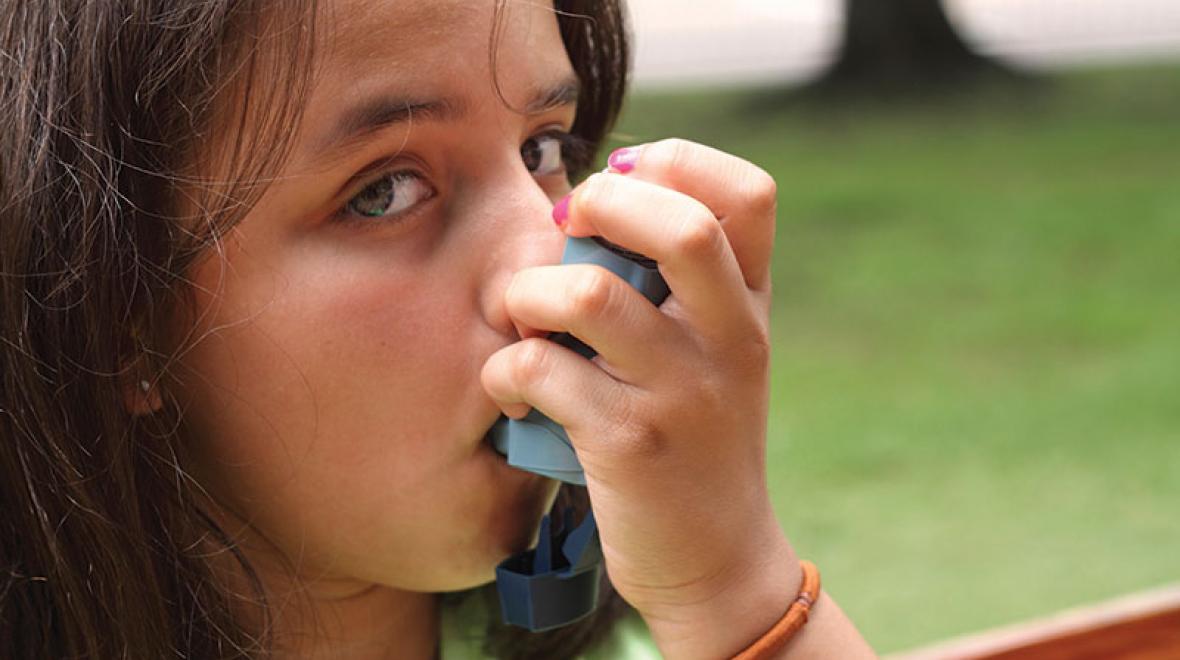
It’s a frightening, far too familiar scene for Colleen Douglass: One of her sons is gasping for air, unable to talk, struggling to breathe as his constricted airways cut down his flow of oxygen. It’s a nightmare scenario for any parent; for an increasing number of families in our state, it’s also a reality. Time seems to stand still when your child is in the throes of an asthma attack.
Resources
- The Seattle Children’s website has lots of information about asthma, including videos.
- Asthma info from the National Heart, Lung and Blood Institute
- The American Academy of Allergy, Asthma and Immunology has information about how to talk to children about asthma, with games and videos
“I’ll do anything to prevent that,” says the Mercer Island mom. “It terrifies me.” Two of Douglass’ three children — 11-year-old Owen and 7-year-old Charlie — currently have asthma, as does Douglass herself. Keeping her family breathing easy takes dedication and persistence; it’s a 24/7 lifestyle, one that involves doctors, allergists, multiple medications — and plenty of vigilance.
If you don’t have a child with asthma, you probably know one. About one out of six households in our state has had at least one child diagnosed with asthma at some point, according to the State Department of Health. Approximately 106,000 kids in our state currently have asthma; one out of every nine of our children has received the diagnosis.
It's only getting worse. Adult asthma in Washington has been above the national average for years, according to the Centers for Disease Control and Prevention (CDC), and the number is steadily increasing. Although experts don’t know exactly why, state health officials cite several possible reasons: People here may spend more time indoors, so they are exposed to more allergens, such as pets, mold and dust. They also get less physical activity and may be overweight or obese — two other major risk factors for asthma.
What is asthma?
Asthma, a chronic inflammatory disorder of the airways, is the most common chronic disease among children worldwide. It causes inflammation and narrowing of the airways, which can lead to wheezing, shortness of breath and coughing. It can be very scary — and when it’s not controlled, it can be life threatening.
“Asthma is not a curable condition,” says Jennifer Sonney, an asthma specialist and the director of the Pediatric Nurse Practitioner program at the University of Washington School of Nursing. “But with proper medication and avoidance of common triggers, children should be able to participate in sports, activities and lead healthy, happy lives.”
Sonney works with families to understand and anticipate the triggers that cause symptoms (called asthma attacks), and to adhere to a careful protocol of preventive medicine — usually a combination of controller medications (which are taken daily) and rescue medications (which are used to treat attacks). “A treatment plan only works if the child and family can adhere to it,” Sonney says.
Facts: Asthma in Washington State
|
Attack triggers
For Douglass’ family, that plan includes daily medication, with special emergency meds when an attack is imminent; lots of communication; and a finely tuned radar for potential triggers — an especially tall order at this time of year, when colds and the flu make the rounds, woodsmoke is in the air, and asthma triggers are seemingly everywhere.
“If we get sick, instead of just getting a cold, we could get bronchitis or pneumonia, or have an asthma attack,” says Douglass of herself and her children. “If one of my kids gets sick or even has the slightest sniffle or cough — anything — we immediately go to two inhalers.”
Douglass’ youngest son, Charlie, has severe food allergies — another common asthma trigger — so Douglass works with Charlie’s teachers and other parents to keep his food safe. “We also pay attention to bonfires — we never stand downwind,” says Douglass, “and we don’t have fires in our home.”
But even the most vigilant parent can be caught off guard. Douglass recently took Charlie to a Halloween party where a detached garage had been converted into a spooky haunted house, complete with smoke machine. It didn’t take long for Douglass to start having trouble breathing: “I’m like a canary in a coal mine for Charlie; we’re allergic to the same things.” The hosts quickly shut off the machine, and Douglass took Charlie home for an emergency breathing treatment.
Most of the time, Douglass says, other parents — and their kids — are generally aware of asthma and allergies, and help steer her kids away from danger. “I mean, something could happen to your kid anywhere,” she says, “but I feel as confident as I can be that nothing peanutty is going to go into my kid’s mouth at school.
“These days, kids are really conscious of other kids’ allergies,” Douglass says, and they also take Charlie’s and Owen’s asthma in stride. “The emotional intelligence of the children in the classroom is really high.”
Risk factors
|











